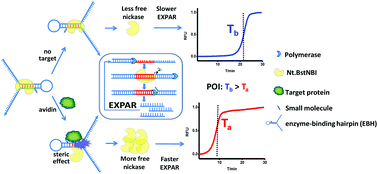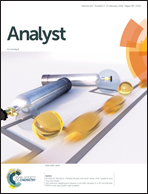A novel steric effect-regulated isothermal exponential amplification technology for the one-step homogeneous sensing of proteins†
Abstract
A simple and homogeneous technology, the steric effect-regulated isothermal exponential amplification reaction (SER-EXPAR), was developed to sense proteins. By using a small molecule linked DNA nanostructure, termed enzyme-binding hairpin (EBH), the protein−small molecule binding events could be readily sensed by utilizing the steric effect generated between the protein and enzyme. It set free the enzyme to be active again, thus regulating the amplification rate of EXPAR.



 Please wait while we load your content...
Please wait while we load your content...